SDG 5 – “Achieve gender equality and empower all women and girls” – has a monitoring framework of nine targets and 14 indicators. The goal encompasses discrimination (5.1), violence (5.2), harmful practices (5.3), unpaid work (5.4), leadership (5.5), and women’s and sexual health (5.6), as well as access to economic resources (5.A), technology (5.B), and law and policy (5.C).
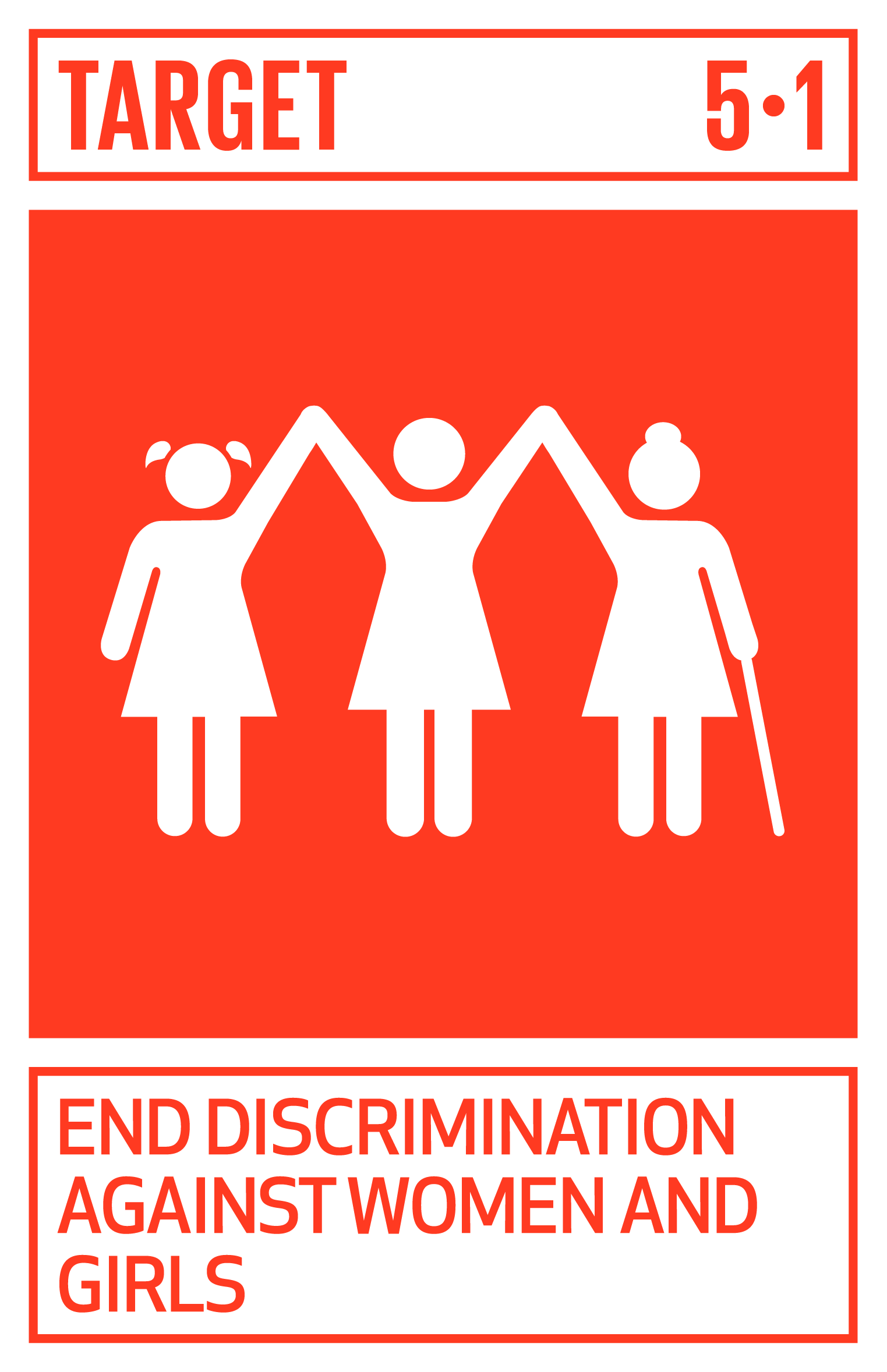
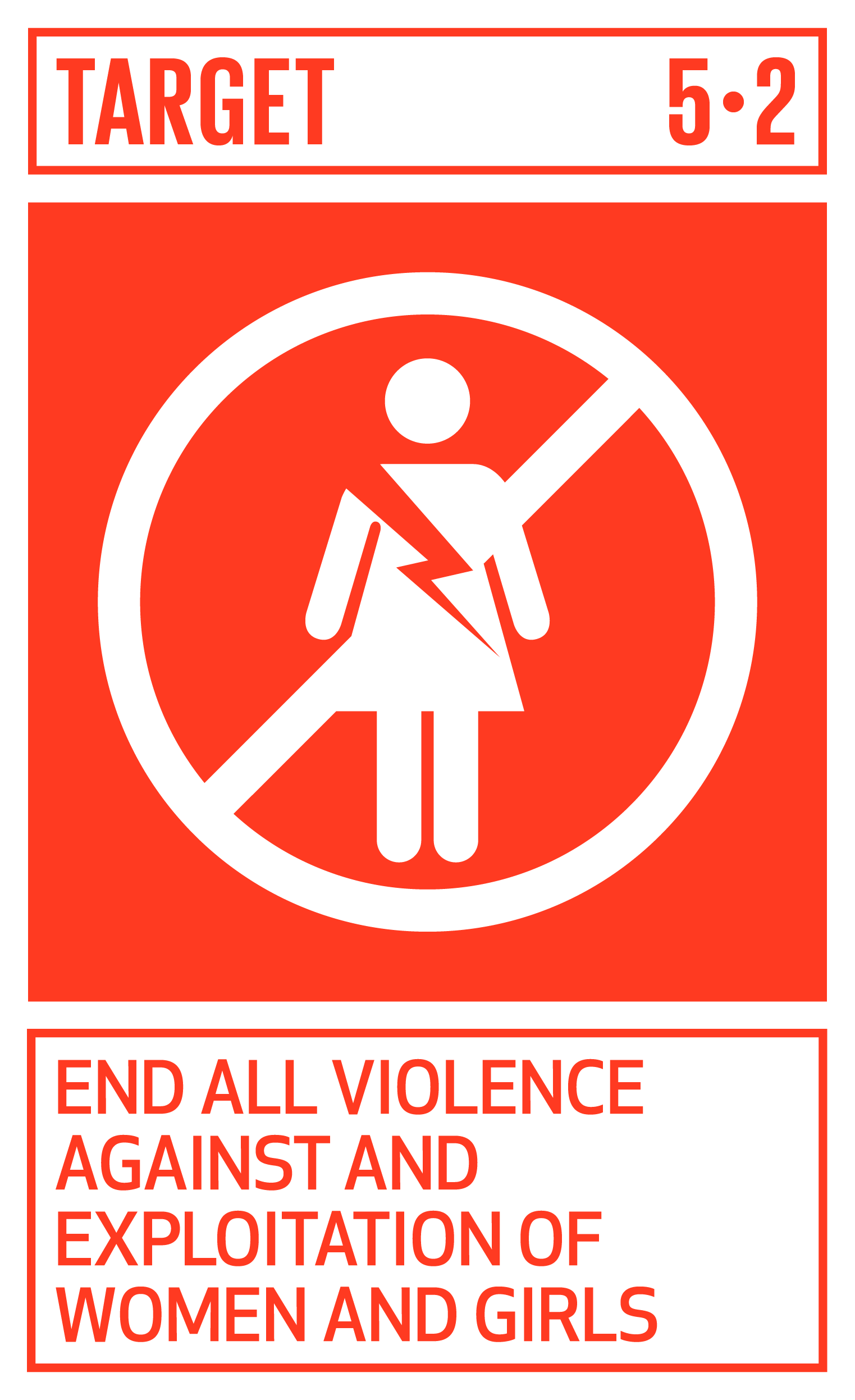
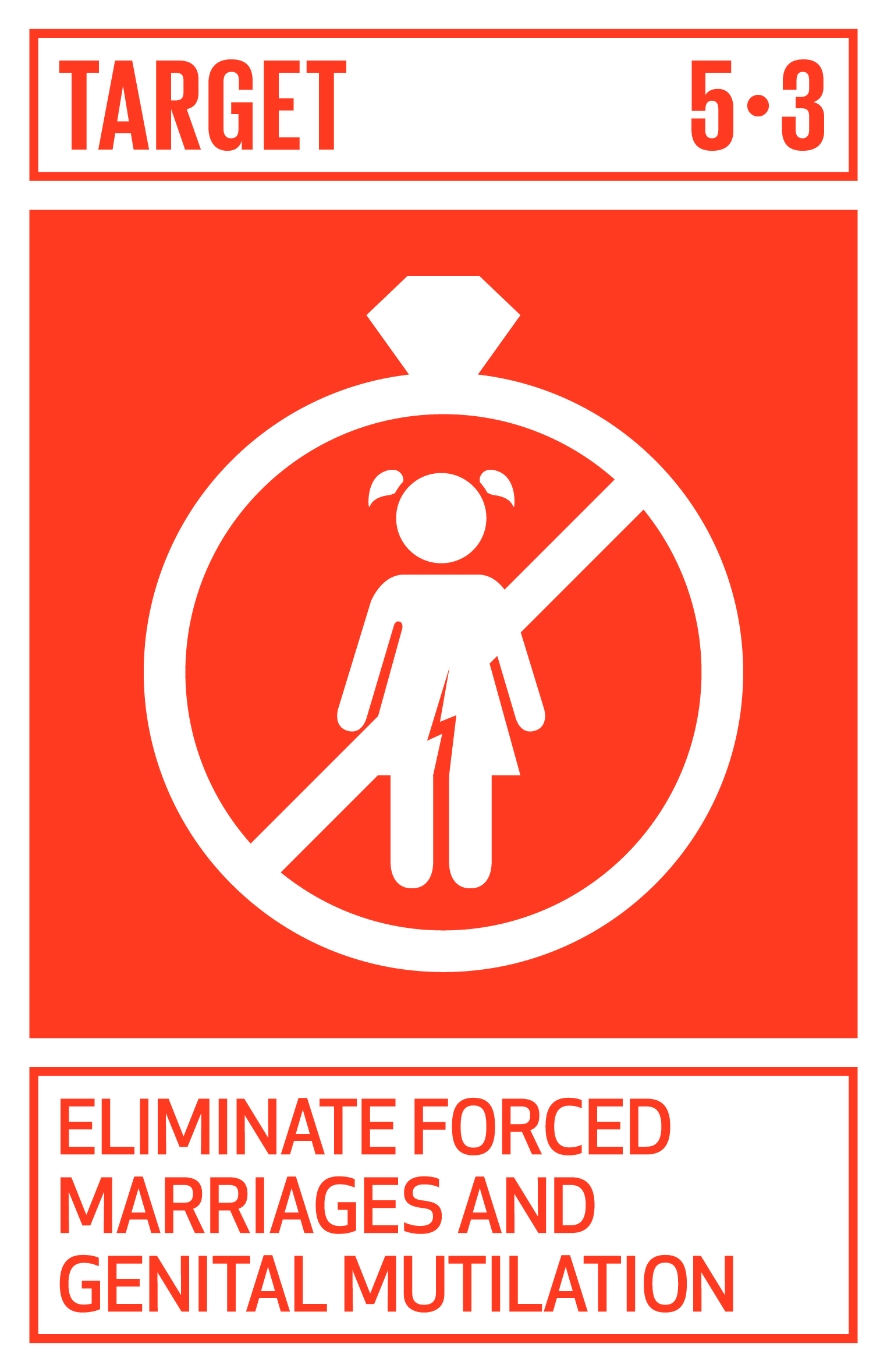
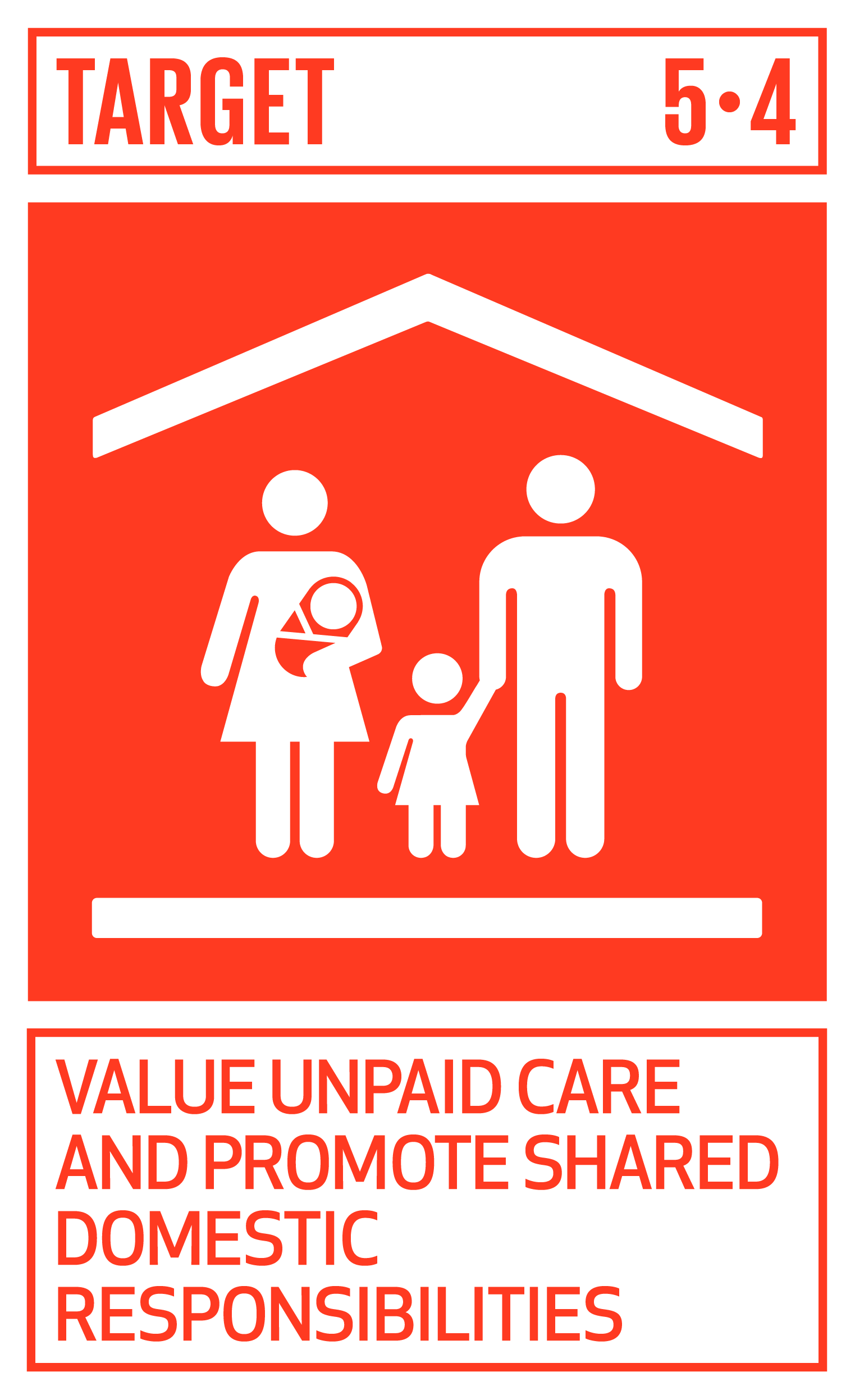
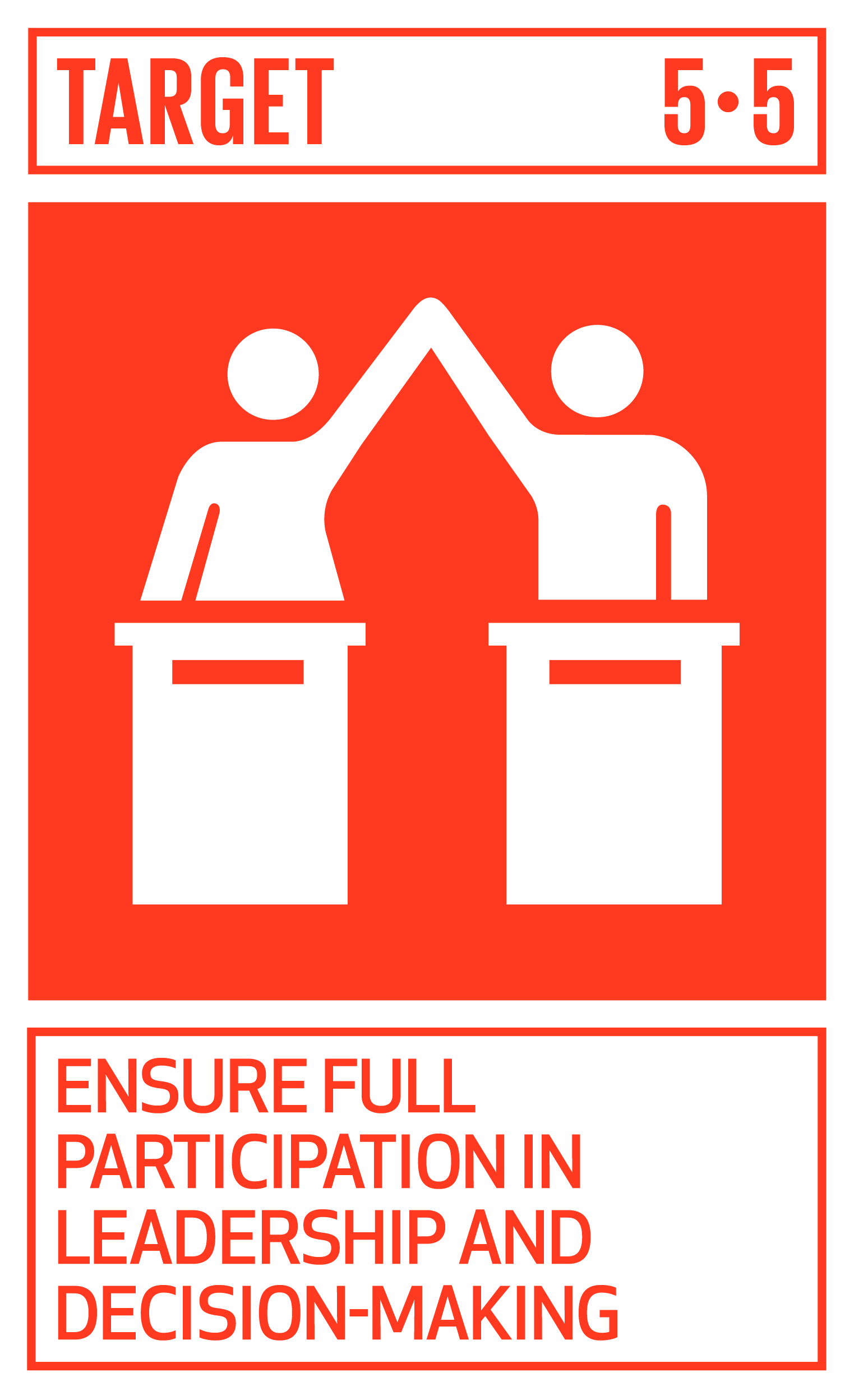
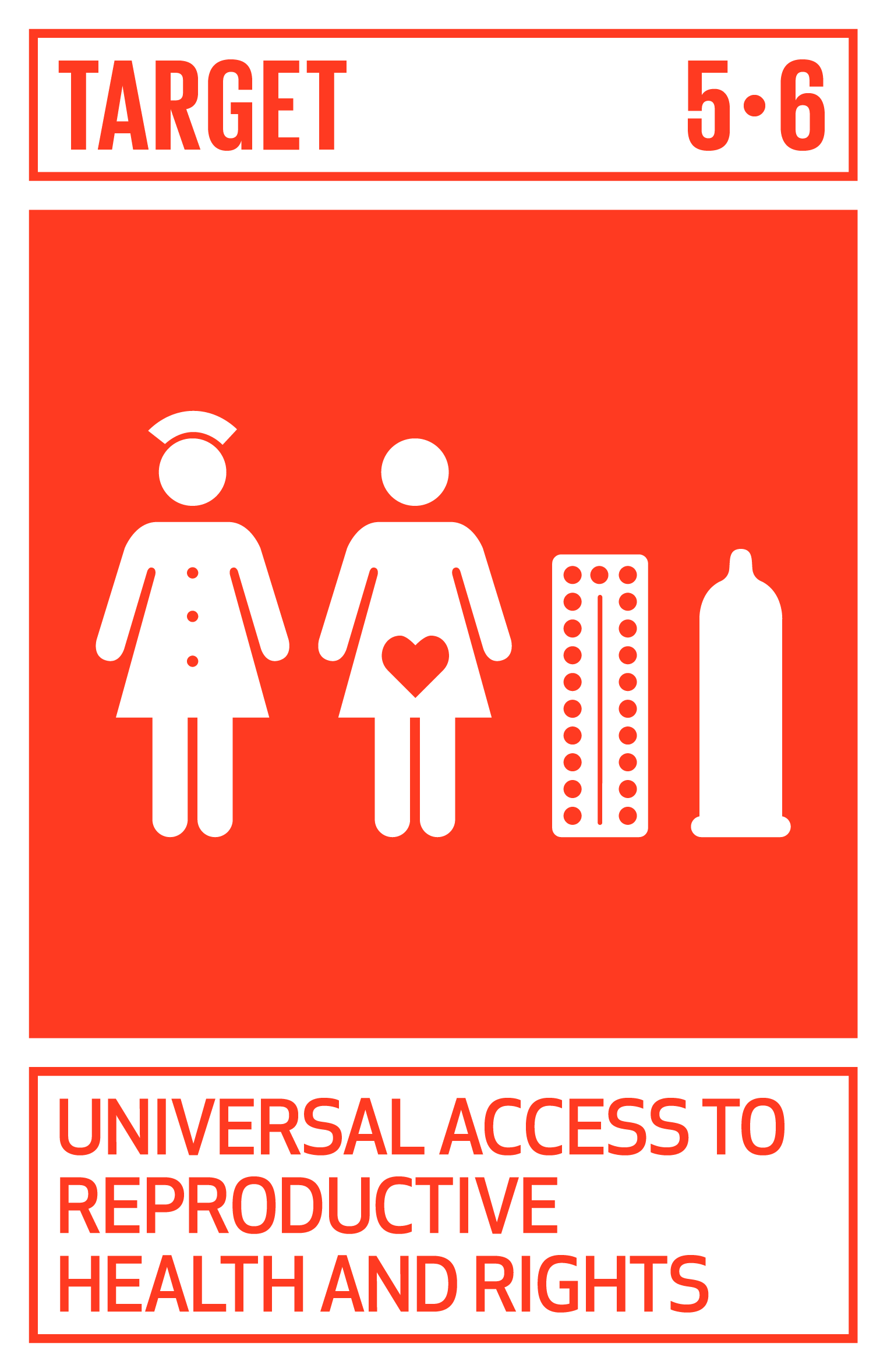
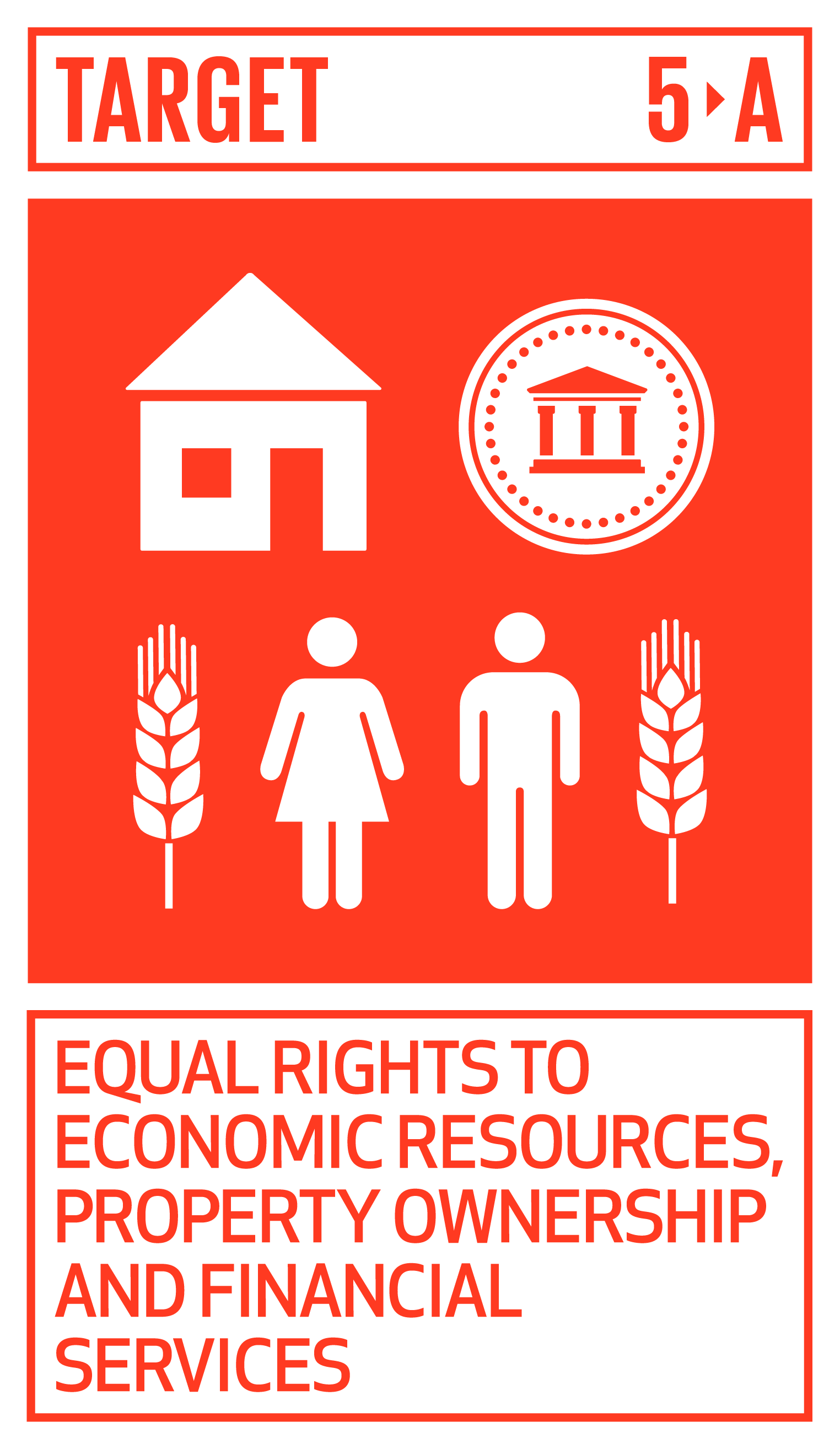
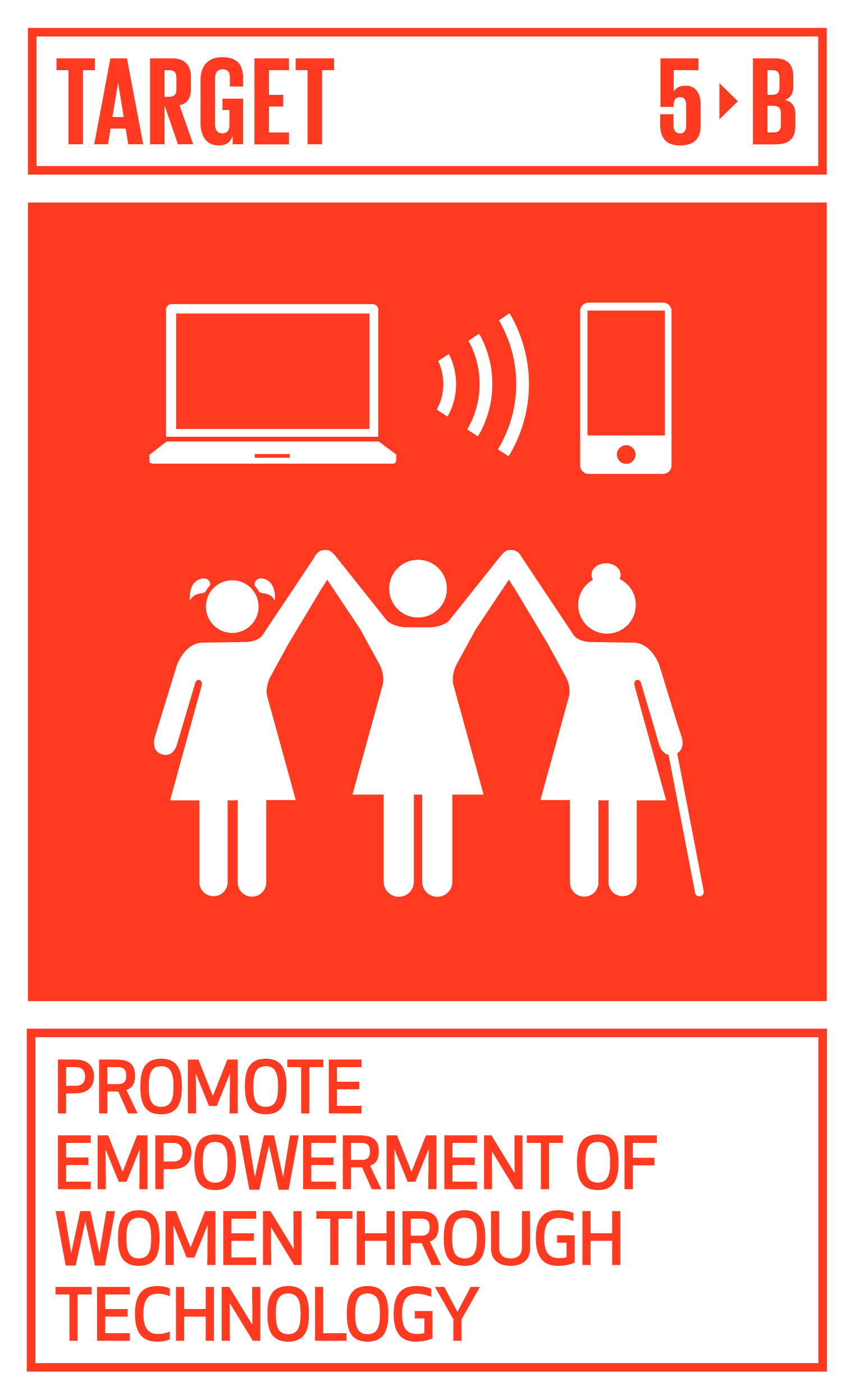
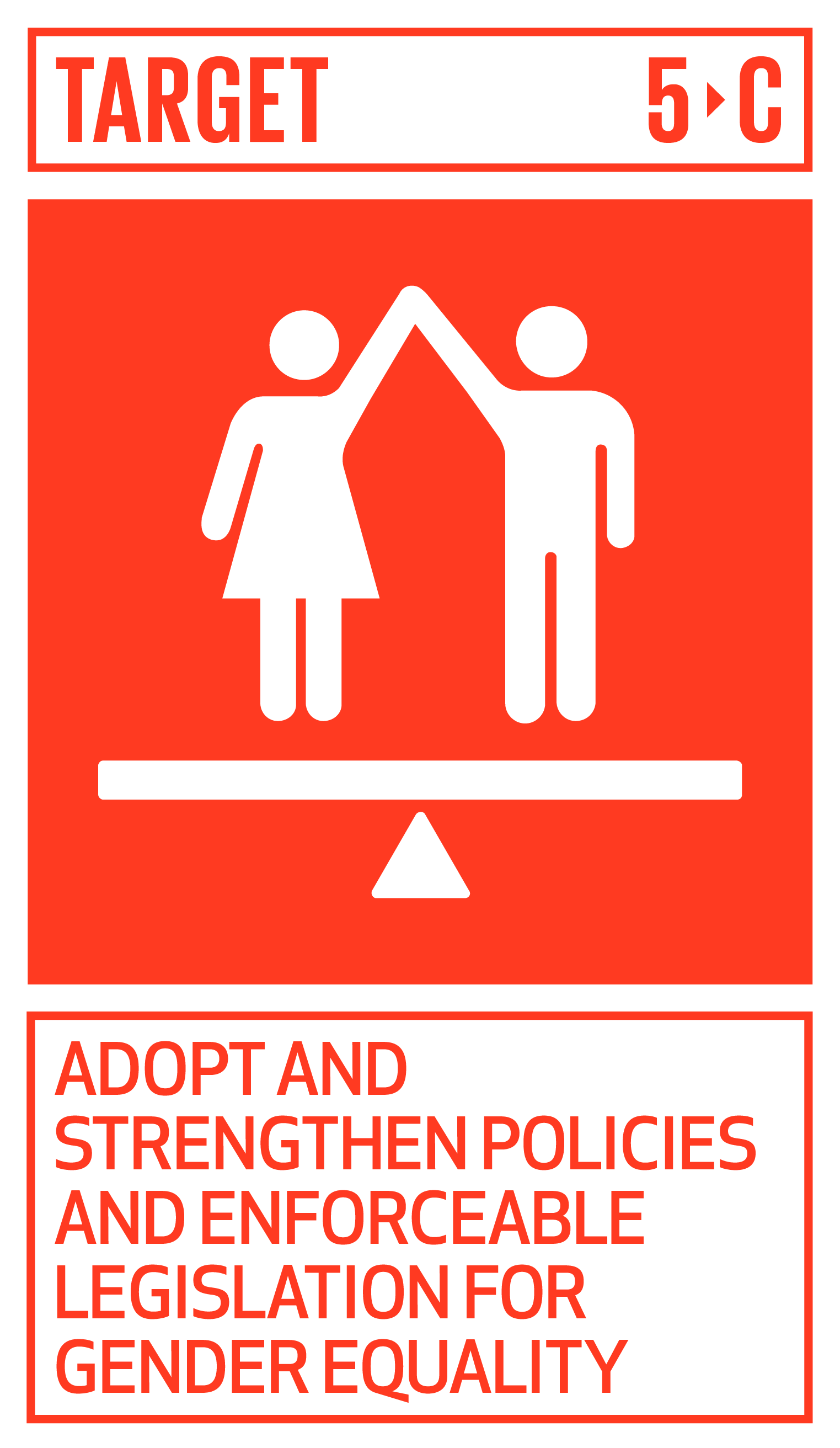
The goal recognizes gender equality as an intrinsic human right.1 Furthermore, the overarching goal of the 2030 Agenda to “leave no one behind” will be unachievable without gender equality and women’s empowerment. The connection between achieving gender equality and eradicating poverty is well known.2 SDG 5 and the other gender-sensitive targets in the 2030 Agenda make up a “Gender Equality Compact” that draws on the Beijing Platform for Action and the Convention on the Elimination of all Forms of Discrimination Against Women (CEDAW) for gender-responsive sustainable development.3
SDG 5, along with 1, 2, 3, 9, and 14, was part of the High Level Political Forum in 2017. SDG 17 is reviewed every year.
Context
Gender equality and women’s empowerment has been on the action list since the Beijing Platform for Action, developed in 1995. The Millennium Development Goals (MDGs) included only one on gender equality, MDG 3, which had only a single target. The SDGs expand significantly on the MDGs, such as by explicitly linking gender equality in economic resources to the sustainable development agenda (5.a).4 The SDGs continue to promote work that more than 20 years later, still needs to be completed.5
A narrow focus on SDG 5 is insufficient for progress. Integrated, multi-sectoral strategies are necessary to ensure that the gender dimensions of poverty, hunger, health, education, water and sanitation, employment, climate change, environmental degradation, urbanization, conflict and peace, and financing for development are not lost. Thus, gender in the SDGs is both a standalone goal as well as integrated across other goals and targets.6
These are just a few of the SDG interconnections for SDG 5 that the members of the ECESA Plus has identified for the 2017 HLPF. Graphic created by ODM.7
The global Commission on the Status of Women has built on the 2030 Agenda and developed a set of “Agreed Conclusions”, which are intended to be a road map for implementation of the 2030 Agenda in a gender-responsive way.8 The Agreed Conclusions focus on:
- Strengthening normative, legal and policy frameworks;
- Strengthening education, training and skills development;
- Implementing economic and social policies for women’s economic empowerment;
- Addressing the growing informality of work and mobility of women workers;
- Managing technological and digital change for women’s economic empowerment;
- Strengthening women’s collective voice, leadership and decision-making; and
- Strengthening the role of the private sector in women’s economic empowerment.
Regionalisation and Localisation
Gender discrimination is a persistent issue. It shows up in the Asia-Pacific in challenges such as occupational segregation, early and forced marriages, violence against women and girls, and unequally distributed burdens of unpaid care and domestic work. More needs to be done, not just to make commitments and write policies, but to mainstream and implement as well.9 Policies, culture and tradition are just some of the impediments to gender equality.10
One significant change that impacts the LMCs is the formation of the ASEAN Economic Community. However, it is not expected that such a fundamental change will have any impact on the gender status quo in ASEAN. This is because while more jobs are expected to be created, institutional and societal roadblocks continue to limit women’s access to this reality. The majority of women are employed in vulnerable employment with limited access to benefits and social protection. For instance, women comprise almost 50% of international migrants who largely work in insecure jobs.
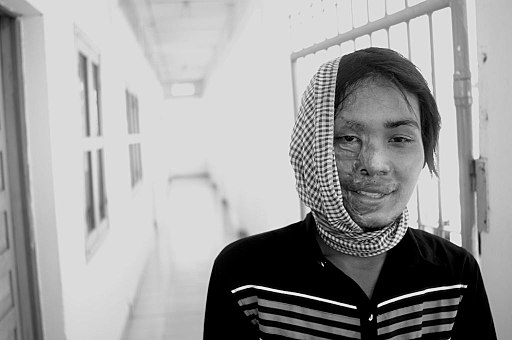
Violence against women remains a major issue. Image by Iulian Circo, Flickr. Licence CC BY 2.0.
One significant change that impacts the LMCs is the formation of the ASEAN Economic Community. However, it is not expected that such a fundamental change will have any impact on the gender status quo in ASEAN. This is because while more jobs are expected to be created, institutional and societal roadblocks continue to limit women’s access to this reality. The majority of women are employed in vulnerable employment with limited access to benefits and social protection. For instance, women comprise almost 50% of international migrants who largely work in insecure jobs.11
Women also contribute substantially to nationally unrecognized and unpaid work, such as child-rearing and household tasks. While gender gaps in education are decreasing, women’s educational attainment still falls behind men. Educational parity also has not translated to a corresponding shift in power structures. Large numbers of highly educated women remain unemployed, and female political representation is disproportionate to male representation. The LMCs, like the other ASEAN countries, have clearly defined laws and policies to promote gender equality and gender mainstreaming, but these have limited impact due to issues with implementation, limited interdepartmental and ministerial coordination as well as inadequate budget allocation.12
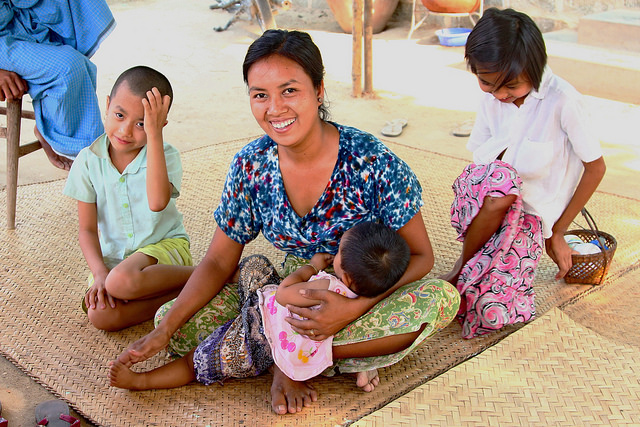
Women, like this mother from Myanmar, do a disproportionate share of unpaid and unrecognized care taking of children and elders, in addition to other household work. Image by Tom Cheatham | World Bank, Flickr. Licence: CC-BY-NC-ND-2.0.
Gender issues have recently gained traction on the ASEAN policy agenda. In 2017, ASEAN launched their “HeForShe” campaign “to raise ASEAN awareness on gender equality by encouraging men and boys as agents of change to promote a culture of respect for women and girls.”13 In recognition of its commitments in the ASEAN Vision 2025 as well as its international commitments, such as to the Beijing Declaration and CEDAW, ASEAN leaders also adopted a Joint Statement on Promoting Women, Peace, and Security in ASEAN.14 However, this has not necessarily translated into action. While ASEAN has a number of institutions on the promotion of gender (including a Commission on Women and Children), as well as policies, legal instruments, and initiatives, the reality is that because ASEAN operates on a policy of “non-interference”, monitoring on implementation does not happen. In addition, institutions lack the funding to implement.15 Other issues include that ASEAN’s gender policies are not well known in the region by all necessary actors, and ASEAN political officials do not have capacity on gender issues and international frameworks.16
While gender generally is part of the policy framework in ASEAN, SDG 5 has not received similar treatment. ASEAN has not identified any explicit complementarities between SDG 5 and the ASEAN Community Vision 2025.17 Instead, ASEAN leaders have suggested that gender issues will be addressed through the five priority areas identified in the Community Vision 2025: poverty eradication, infrastructure and connectivity, sustainable management of natural resources, sustainable production and consumption, and resilience.18
Despite having global significance in the form of a standalone SDG, gender issues are not being accorded the same level of priority in the Asia-Pacific Region and ASEAN. Governments are being encouraged to utilize existing mechanisms, such as reporting under the nearly 40-year-old Convention on the Elimination of All Forms of Discrimination against Women (CEDAW)19, or to cooperate to continue “dialogues to support multi-sectoral policies”.20 Policy items needs to be actionable and implemented, and more than what is currently being done is needed to eliminate violence against women; attain gender equality in positions of leadership, ownership of economic assets, and financial independence; and to enhance women’s leadership and decision-making in all aspects of society.
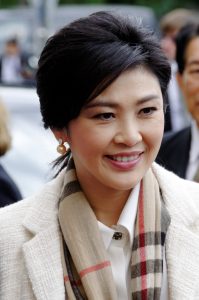
Female representation in government is generally quite poor. Former Thai Prime Minister Yingluck Shinawatra, above, and current Myanmar State Counsellor Aung San Suu Kyi are unusual as examples of women in power. Photo by Gerd Seidel, Wikimedia. Licensed under CC BY-SA 3.0.
Means of Implementation
Declarations and aspirational statements, even with commitments to act to increase gender equality, have not been backed by the quantity of resources needed to create actual change.21 In addition, women need to be meaningfully included in planning and budgeting to ensure gender-responsive financing and frameworks.22 However, the financial means of implementation are not specifically mentioned for SDG 5.
Inadequate resources for the implementation of national action plans on gender equality and other gender equality policies is a significant challenge across all countries. This is an issue both for countries with specific line ministries on women’s issues, like Cambodia, as well as those without, like Lao PDR.23 In addition, investment in tracking systems for public allocations for gender equality are critical for the transparency necessary for effective policy formulation and accountability.24
However important financing is for forwarding the work of SDG 5, money alone is insufficient. Strong systemic means of implementation are musts: political will; enabling normative frameworks; institutional structures and capacities; partnership and participation, and rigorous systems for tracking results.25 SDG 5 focuses on three systemic means of implementation:
- Undertaking reforms to give women equal rights to economic resources and assets (5.a);
- Enhancing the use of technology to promote the empowerment of women (5.B); and
- Adopting and strengthening sound policies and enforceable legislation for the promotion of gender equality and empowerment of women and girls (5.c).
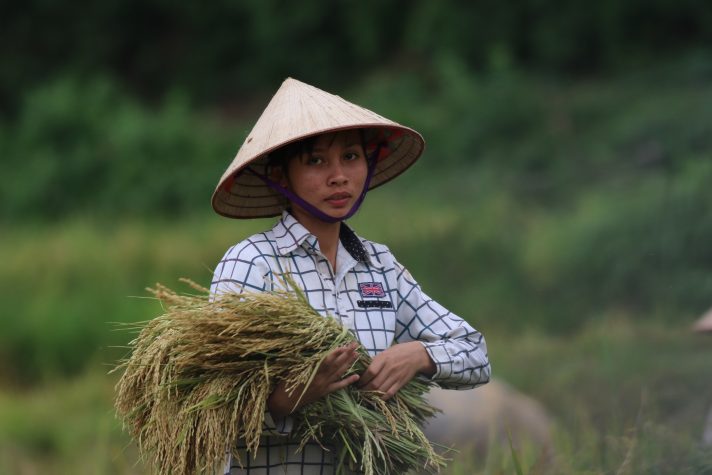
Access to economic resources, including for women farmers, is one way to promote gender equality. Photo by Leo Sebastian/CCAFS SEA, Flickr. Licensed under CC BY-NC-SA 2.0.
Access to economic resources and assets (5.a) is a tangible way to shift power to women, provide them with greater protection, and enhance their bargaining power in the household. However, data on this is limited.26 Further, access to technology, technological skills, and media (5.b) is another tool for women’s empowerment. Women are underrepresented here, in both the development and use of technology, which impacts how goods and services are distributed and accessed in the digital realm.27 Finally, ensuring policies and legislation are appropriately tracked (5.c) will ideally promote accountable institutional action to eradicate discrimination against women and girls.28
Follow Up and Review, Monitoring and Evaluation
Global data on SDG 5 is extremely limited. 12 of the 14 indicators are considered Tier II, which means that while the methodology for data collection is well developed, the actual data are not regularly produced by countries. One (indicator 5.6.229) is Tier III, which means that neither the methodology nor the data are ready. One Tier II indicator is actually mixed tier (indicator 5.5.130), which means that there are only two indicators that are considered Tier I.
| Indicator | Tier | Custodian Agency | Notes |
|---|---|---|---|
| 5.1.1 | II | UN WOMEN, WORLD BANK, OECD DEVELOPMENT CENTRE | -- |
| 5.2.1 | II | UNICEF, UN WOMEN, UNFPA, WHO, UNODC | -- |
| 5.2.2 | II | UNICEF, UN WOMEN, UNFPA, WHO, UNODC | -- |
| 5.3.1 | II | UNICEF | -- |
| 5.3.2 | II | UNICEF | -- |
| 5.4.1 | II | UNSD, UN Women | -- |
| 5.5.1 | I/II | IPU, UN Women | -- |
| 5.5.2 | I | ILO | -- |
| 5.6.1 | II | UNFPA | -- |
| 5.6.2 | II | UNFPA | Reclassified from III to II in December 2018. |
| 5.A.1 | II | FAO | -- |
| 5.A.2 | II | FAO | -- |
| 5.B.1 | I | ITU | -- |
| 5.C.1 | II | UN Women, OECD | -- |
There are a wide range of custodian agencies, including UNICEF, UN Women, and the UN Population Fund. However, UN Women has taken the lead in developing a monitoring report on gender in the SDGs generally, with its 2018 publication “Turning Promises into Action: Gender Equality in the 2030 Agenda for Sustainable Development”.
Reflecting global trends, data on the SDG 5 indicators are also limited in the LMCs. The LMCs lack any data on half of the indicators (5.1.1, 5.2.2, 5.3.2, 5.6.2, 5.a.1, 5.a.2, and 5.c.1), and data are only available for some of the LMCs for indicators 5.2.1, 5.4.1, 5.6.1, and 5.b.1. This means that data for the LMCs is only available for 5.3.1, 5.5.1, and 5.5.2. Further, only SDG 5.5.1 has up to date data.
In addition, while data for the SDGs are better disaggregated by sex than by other metrics (for example, location or disability) sex-disaggregated data remain sparse, with availability for as few as 22 SDG indicators. 31
This lack of data poses a major challenge for gender-sensitive action. Valid, reliable, and up-to-date data disaggregated by sex, and gender statistics are necessary. Significant effort needs to be made to develop a gender-relevant body of data.32
References
- 1. ADB, 2017. Key Indicators for Asia and the Pacific 2017. Accessed August 2, 2018.
- 2. Commission on the Status of Women. 2017. Eradicating poverty and promoting prosperity in a changing world. https://sustainabledevelopment.un.org/content/documents/14606CommissionStatusWomen.pdf. Accessed July 30, 2018.
- 3. UN Women. 2016. Driving the gender-responsive implementation of the 2030 agenda for sustainable development. http://www.unwomen.org/-/media/headquarters/attachments/sections/library/publications/2016/driving-gender-responsive-implementation-2030agenda.pdf?la=en&vs=5353. Accessed July 30, 2018.
- 4. ADB. 2017. Key Indicators for Asia and the Pacific 2017. Accessed August 2, 2018.
- 5. UNESCAP. 2017. Southeast Asia Subregion Challenges and Priorities for SDG Implementation. Accessed August 1, 2018.
- 6. UN Women. 2018. Turning promises into action: Gender equality in the 2030 Agenda for Sustainable Development. http://www.unwomen.org/-/media/headquarters/attachments/sections/library/publications/2018/sdg-report-gender-equality-in-the-2030-agenda-for-sustainable-development-2018-en.pdf?la=en&vs=5653. Accessed July 30, 2018.
- 7. ECESA Plus. 2017. 2017 HLPF Thematic review of SDG 5: Achieve gender equality and empower all women and girls. https://sustainabledevelopment.un.org/content/documents/14383SDG5format-revOD.pdf. Accessed August 6, 2018.
- 8. UN Women. 2016. Driving the gender-responsive implementation of the 2030 agenda for sustainable development. http://www.unwomen.org/-/media/headquarters/attachments/sections/library/publications/2016/driving-gender-responsive-implementation-2030agenda.pdf?la=en&vs=5353. Accessed July 30, 2018.
- 9. Wahlén, Catherine Benson. 2017. What are regional priorities for HLPF 2017? http://sdg.iisd.org/commentary/policy-briefs/what-are-regional-priorities-for-hlpf-2017/. Accessed July 30, 2018.
- 10. UNESCAP. 2017. Southeast Asia Subregion Challenges and Priorities for SDG Implementation. Accessed August 1, 2018.
- 11. Ibid.
- 12. ASEAN Secretariat. 2016. Projected gender impact of the ASEAN Economic Community. http://www.asean.org/storage/2015/11/Final-Gender-Dimensions-of-the-ASEAN-Economic-Community-updated-on-13.03.pdf. Accessed August 2, 2018.
- 13. ASEAN. 2017. ASEAN, UN to promote gender equality through HeForShe campaign. http://asean.org/asean-un-to-promote-gender-equality-through-heforshe-campaign/. Accessed August 2, 2018.
- 14. ASEAN. 2017. Joint Statement on Promoting Women, Peace, and Security in ASEAN. http://asean.org/storage/2017/11/8.-ADOPTION_Joint-Statement-on-Promoting-Women-Peace-and-Security-in-ASEANACWC-Endorsed_rev2.pdf. Accessed August 2, 2018.
- 15. Elten, Hannah, Olivia Geymond and Hien Thi Nguyen. 2017. 4.1 Gender equality and the political empowerment of women in South and Southeast Asia in Regional Organizations, Gender Equality, and the Political Empowerment of Women. https://www.idea.int/sites/default/files/publications/chapters/regional-organizations-gender-equality-and-the-political-empowerment-of-women/regional-organizations-gender-equality-and-the-political-empowerment-of-women-chapter-4.pdf. Accessed August 2, 2018.
- 16. Ibid.
- 17. UNESCAP, ASEAN. 2017. Complementarities between the ASEAN Community Vision 2025 and the United Nations 2030 Agenda for Sustainable Development: A Framework for Action. Accessed August 1, 2018.
- 18. Ibid.
- 19. ECESA Plus. 2017 HLPF Thematic review of SDG 5: Achieve gender equality and empower all women and girls. https://sustainabledevelopment.un.org/content/documents/14383SDG5format-revOD.pdf. Accessed July 30, 2018.
- 20. UNESCAP. 2017. Regional road map for implementing the 2030 Agenda for Sustainable Development in Asia and the Pacific. Accessed August 1, 2018.
- 21. ESCAP. Working Paper: Financing for Gender Equality and Women’s Empowerment in Asia and the Pacific. https://www.unescap.org/sites/default/files/WP_Financing%20for%20GEWE.pdf. Accessed August 2, 2018.
- 22. Ibid.
- 23. ECESA Plus. 2017 HLPF Thematic review of SDG 5: Achieve gender equality and empower all women and girls. https://sustainabledevelopment.un.org/content/documents/14383SDG5format-revOD.pdf. Accessed July 30, 2018.
- 24. Ibid.
- 25. ESCAP. Working Paper: Financing for Gender Equality and Women’s Empowerment in Asia and the Pacific. https://www.unescap.org/sites/default/files/WP_Financing%20for%20GEWE.pdf. Accessed August 2, 2018.
- 26. ECESA Plus. 2017 HLPF Thematic review of SDG 5: Achieve gender equality and empower all women and girls. https://sustainabledevelopment.un.org/content/documents/14383SDG5format-revOD.pdf. Accessed July 30, 2018.
- 27. Ibid.
- 28. Ibid.
- 29. “Number of countries with laws and regulations that guarantee full and equal access to women and men aged 15 years and older to sexual and reproductive health care, information and education.”
- 30. Defined as: “The Red List Index measures change in aggregate extinction risk across groups of species. It is based on genuine changes in the number of species in each category of extinction risk on The IUCN Red List of Threatened Species (IUCN 2015) is expressed as changes in an index ranging from 0 to 1.”
- 31. APFSD. 2018. Asia-Pacific Sustainable development goal data availability report. Accessed August 1, 2018.
- 32. ESCAP. Working Paper: Financing for Gender Equality and Women’s Empowerment in Asia and the Pacific. https://www.unescap.org/sites/default/files/WP_Financing%20for%20GEWE.pdf. Accessed August 2, 2018.

